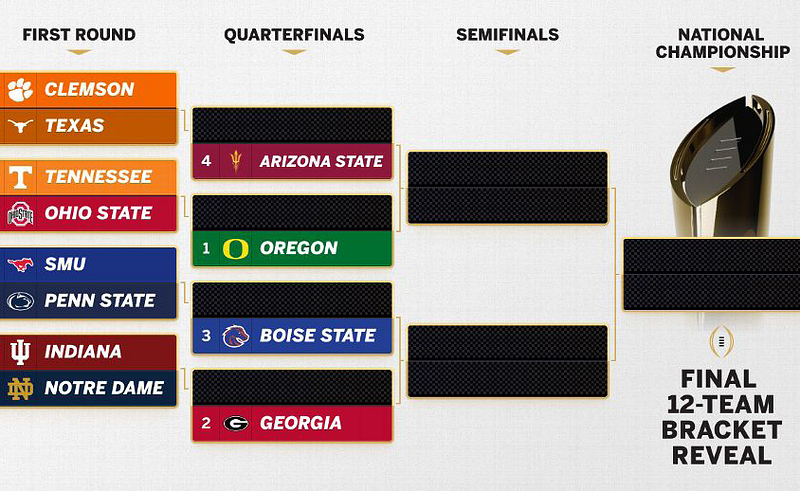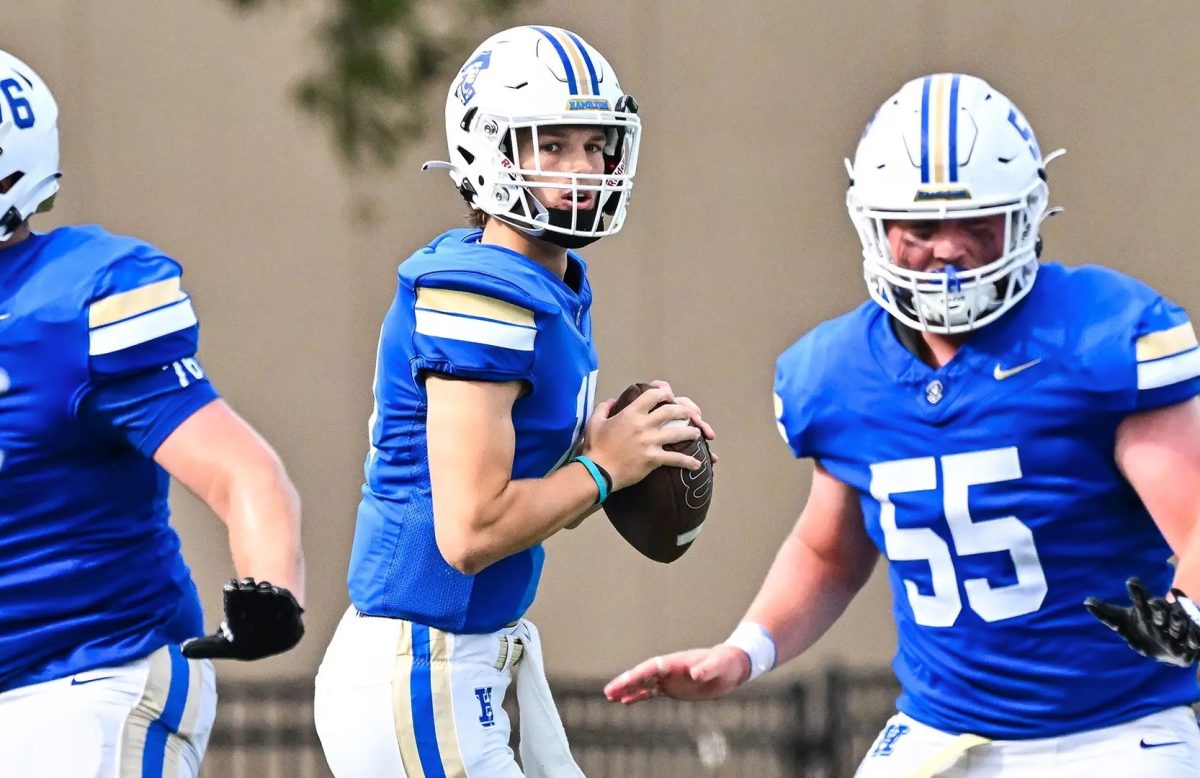
This past Sunday, the College Football layoff committee determined the 12-team College Football Playoff bracket. This year’s decisions were less unexpected than in previous years due to teams receiving automatic byes, and many teams with projected at-large bids didn’t play during championship weekend, so their rank would not change relative to other resting teams. Nonetheless, there was still controversy surrounding the selection committee’s decisions and the overall format of the playoffs.
The ACC championship was the most impactful conference championship game, where Clemson and SMU faced off for a guaranteed spot in the playoffs. Clemson’s stakes were highest as they were in a win-or-go-home position, while SMU wanted to win to prevent being left out from the playoffs. The game was a thriller, ending on a game-winning 56-yard field goal from Clemson to send them to the playoffs. On the other hand, SMU was unable to complete a comeback and could only wait. It was either the SMU Mustangs or the Alabama Crimson Tide for the final at-large-bid.
The following day, the committee picked an 11–2 SMU over a 9–3 Alabama. That makes sense, right? Not exactly. Many are upset with the committee’s decision to grant SMU the final playoff spot over Alabama. SMU has a weak strength of schedule, ranked 68th in the country, with zero wins against teams currently ranked in the top 25. Their two losses are to an unranked BYU team that fizzled out towards the end of the season and #16 Clemson. Conversely, Alabama has a strong strength of schedule, ranked 16th in the country, with notable victories against #2 Georgia, #19 Missouri, and other tough SEC teams, including Ole Miss. However, two of the three of Crimson Tide’s losses have been ugly, losing to a .500 Vanderbilt and being embarrassed by a very average Oklahoma team. The committee was forced to pick between an SMU team that has not proven to have championship potential and the Crimson Tide, who has championship potential but has been vulnerable throughout the season.
With the committee picking SMU, many Alabama and SEC supporters were left to question the selection criteria. Does Alabama get punished for playing in a more challenging conference? Nick Saban, former six-time national champion and longtime coach of Alabama, expressed his disappointment with the committee’s decision to exclude Alabama from the playoffs. Stressing the importance of competition and strength of the schedule, Saban believes the committee should have put more weight on the type of opponents a team plays throughout the year and that significant wins have to count for more. Saban further explained that teams who understand the selection process may schedule games against weaker opponents in the future if the committee stresses the number of wins over the type of wins.
Because the committee excluded 13–0 Florida State from the playoffs last year for a 12–1 Alabama, many thought the committee shifted their criteria and chose the “best” teams rather than those with the most decorated resumes. Today, if one were to ask whether SMU or Alabama has a better chance at winning the national championship and beating teams such as Oregon, Georgia and Texas, many would lean toward the Crimson Tide. Many believe the Crimson Tide are the “better” team, meaning their exclusion from the playoffs is a shocker.
Many believe that the playoff structure is flawed. The format states that the top four ranked conference champions receive a first-round bye. However, many view this as a major flaw as teams like Boise State and Arizona State ranked #12 and #16 overall, receive byes. Because of this, getting the #5 or #6 seed may be more advantageous than having a first-round bye.
Of course, playing no game versus playing a first-round game is better, but for a championship-caliber team, these lower seeds may give them better chances at going deeper into the playoffs. For example, Texas, the #5 seed, plays Clemson, who is ranked #16 overall in the first round. Assuming Texas wins, they would play Arizona State in the quarterfinals, the #12 ranked overall team. Many agree that Texas is significantly stronger than both teams and should cruise into the semifinals. Similarly, Penn State, who is the #6 seed, gets to play a questionable SMU team in the first round and is projected to play Boise State, the #9 overall ranked team, in the quarterfinals. This gives Penn State a direct and manageable path to the semifinals.
On the other hand, teams like Oregon, ranked #1 overall and undefeated on the season, get a first-round bye but will have to play a much stronger opponent in Ohio State or Tennessee in the quarterfinals. In most bracket formats, the higher seeds are rewarded an easier path to the championship for their outstanding regular season performances but this is not the case for the CFB playoffs.
A possible solution to fix some of the issues of the CFP bracket is to keep automatic bids for the top 5 conference champions, but seeds #1–4 who receive a first-round bye are the overall #1–4 ranked teams. After each round, matchups are reordered, and the highest seed will always play the lowest seed available, similar to the NFL playoff format. This way, conference champions still get rewarded with a guaranteed playoff spot but aren’t disproportionately rewarded with byes. Ultimately, the selection committee always receives complaints, no matter which teams they select. Nonetheless, it will be interesting to watch which of the many Cinderella teams will make it the furthest going forward.
























